Harishyam Arts Blog
Who is Parashvanath? The Life and Legacy of Jainism’s 23rd Tirthankara
By Lakshay Sharma | On 22 November, 2025 | Views

Faith and spirituality are cornerstones of Indian tradition, and Jainism stands as one of the most profound philosophies of peace, self-discipline, and compassion. Among the revered Tirthankaras, Lord Parashvanath holds a unique place as the 23rd Tirthankara, renowned for his compassion and teachings of non-violence. At Harishyam Arts, we celebrate his legacy through our handcrafted statues that represent the divine calmness and truth associated with his spiritual journey.
Birth and Early Life of Lord Parashvanath
Lord Parashvanath was born around the 9th century BCE in the holy city of Varanasi, also known as Kashi. His father, King Ashvasena, was a strong and just ruler of the Ikshvaku dynasty, while his mother, Queen Vama Devi, was known for her piety and kindness.
From childhood, Parashvanath displayed a gentle heart filled with compassion for all living beings. He was intelligent, calm, and had a deep inclination toward spirituality. Legends say he once rescued a serpent that was trapped in a burning log during a yajna, symbolizing his lifelong connection with the serpent that later appeared in his icons.
Even as a prince, Parashvanath showed no attachment to royal luxuries. His natural inclination toward meditation and truth led him to question the meaning of life and the cause of human suffering.
Renunciation and Spiritual Quest
At the age of 30, Prince Parashvanath renounced worldly pleasures and adopted the life of an ascetic. He gave up his royal attire, wealth, and family comfort to walk the path of self-realization.
With immense focus and discipline, he practiced deep meditation and strict penance. After years of spiritual practice, he attained Kevala Jnana, or supreme knowledge. Through this enlightenment, he realized the eternal truths of karma, soul purification, and liberation from the cycle of birth and death.
He spent the rest of his life preaching these truths to the people, guiding them toward a path of compassion, truth, and detachment from material desires.
Core Teachings and Philosophy
Lord Parashvanath’s teachings were based on four main vows known as the Chatur-Yama Dharma. These are considered the spiritual foundation of Jain ethics:
-
Ahimsa (Non-violence): One should avoid harming any living being through thought, word, or action.
-
Satya (Truthfulness): Speak truth that does not hurt others.
-
Asteya (Non-stealing): Refrain from taking anything that is not willingly given.
-
Aparigraha (Non-possession): Live a life of detachment and simplicity.
These four vows later evolved into the five great vows (Mahavratas) taught by Lord Mahavira, who succeeded Parashvanath as the 24th Tirthankara. Through his teachings, Parashvanath emphasized purity of the soul, compassion to all beings, and liberation through right conduct and meditation.
Symbolism and Iconography of Lord Parashvanath
Parashvanath’s image is one of the most distinct among all Tirthankaras. He is typically depicted in a meditative posture beneath a canopy formed by a serpent with multiple hoods. This serpent, named Dharanendra, is believed to have protected Parashvanath during his meditation from a storm caused by a demon named Kamatha.
The serpent symbolizes divine guardianship, protection, and spiritual awakening. The calm expression on the idol’s face represents inner peace and enlightenment.
At Harishyam Arts, our artisans bring this divine serenity to life through handcrafted Parashvanath idols. Whether carved in marble, cast in brass, or sculpted in wood, each piece reflects both spiritual devotion and artistic mastery. We pay attention to every detail—from the gentle curves of the face to the fine depiction of the serpent—capturing the divine tranquility that Lord Parashvanath embodies.
Parashvanath’s Legacy and Relevance Today
Lord Parashvanath continues to inspire millions of Jain followers and spiritual seekers even today. His message of compassion and non-violence resonates deeply in a world seeking peace and moral clarity. His teachings bridge the gap between material success and spiritual growth, reminding people to live ethically and consciously.
Numerous temples dedicated to Lord Parashvanath can be found across India, including in Varanasi, Mount Sammeta Shikhar, Shravanabelagola, and Khajuraho. Each temple stands as a symbol of faith, serenity, and timeless devotion.
Owning or worshipping a Parashvanath idol at home or temple space is not just a religious act—it is a daily reminder of moral discipline, compassion, and mindfulness. At Harishyam Arts, we take pride in crafting Jain Tirthankara idols that inspire devotion and elevate the spiritual aura of any space.
Parashvanath’s Path to Moksha
After spreading the message of truth and compassion for many years, Lord Parashvanath attained Nirvana (liberation) at Mount Sammeta Shikhar, one of the holiest pilgrimage sites for Jains. It is believed that twenty of the twenty-four Tirthankaras attained Moksha at this sacred mountain.
His soul, freed from all karmic bonds, merged into the state of infinite bliss and knowledge. This final liberation symbolizes the ultimate goal of every spiritual seeker—freedom from the cycle of birth and death and unity with pure consciousness.
The Artistic and Spiritual Essence at Harishyam Arts
At Harishyam Arts, we believe that devotional art connects the physical and the spiritual. Each Parashvanath statue we create is more than just sculpture—it is a sacred representation of peace, compassion, and truth.
Our skilled artisans combine traditional techniques with modern craftsmanship to ensure that every piece tells the story of divine perfection. Whether placed in homes, temples, or meditation spaces, these idols radiate positive energy and reverence.
For collectors and devotees alike, owning a handcrafted Parashvanath statue from Harishyam Arts is an opportunity to connect with an ancient spiritual legacy that continues to illuminate hearts across generations.
Frequently Asked Questions (FAQs)
Q1. Who was Lord Parashvanath in Jainism?
Ans: Lord Parashvanath was the 23rd Tirthankara in Jainism who lived around the 9th century BCE. He taught the path of truth, non-violence, and renunciation.
Q2. What are the main teachings of Parashvanath?
Ans: His teachings centered around four vows: non-violence, truthfulness, non-stealing, and non-possessiveness. These principles guide Jains in their moral and spiritual lives.
Q3. Why is Parashvanath shown with a serpent canopy?
Ans: The multi-hooded serpent symbolizes protection and enlightenment. It also refers to the story where the serpent Dharanendra shielded him during his meditation.
Q4. Where did Lord Parashvanath attain Moksha?
Ans: He attained Nirvana at Mount Sammeta Shikhar in Jharkhand, one of the holiest Jain pilgrimage sites.
Q5. Can we keep a Parashvanath idol at home?
Ans: Yes. Keeping a Parashvanath idol at home promotes peace, compassion, and spiritual harmony. It serves as a reminder of ethical living and mindfulness.
Faith and spirituality are cornerstones of Indian tradition, and Jainism stands as one of the most profound philosophies of peace, self-discipline, and compassion. Among the revered Tirthankaras, Lord Parashvanath holds a unique place as the 23rd Tirthankara, renowned for his compassion and teachings of non-violence. At Harishyam Arts, we...

Lakshay Sharma
I’m Lakshay Sharma, a writer with a deep passion for Hindu mythology, Vastu Shastra, and home interiors. I enjoy exploring the rich traditions of Hindu gods and goddesses, sharing insights into Vastu principles, and offering guidance on creating sacred spaces like Puja Mandirs. Through my writing, I aim to inspire harmony and spiritual well-being, blending traditional knowledge with modern perspectives.
Harishyam Arts | Jaipur
Related Blogs

Who is Parashvanath? The Life and Legacy of Jainism’s 23rd Tirthankara
Lakshay Sharma | November 22, 2025
Faith and spirituality are cornerstones of Indian tradition, and Jainism stand...
Read More...
How to Choose Between Carved and Minimalistic Wooden Mandirs
Lakshay Sharma | November 21, 2025
A home mandir (temple) is far more than just a piece of furniture; it is the s...
Read More...
How to clean silver god idols at home
Lakshay Sharma | November 21, 2025
At Harishyam Arts, we understand the spiritual and aesthetic significance of s...
Read More...
Are Marble Dust Statues Ideal for Your Home Temple? Pros & Cons
Lakshay Sharma | November 19, 2025
When it comes to selecting statues for your home temple, marble dust statues h...
Read More...
Where to Buy Authentic Marble Gods' Moortis in the USA: A Guide for Devotees and Collectors
Lakshay Sharma | November 19, 2025
For devotees and collectors in the USA seeking authentic marble Hindu god moor...
Read More...
Maa Parvati 108 Names in Sanskrit and English: Their Significance, Meaning, and Mantra Power
Lakshay Sharma | November 17, 2025
The Divine Essence of Maa Parvati
Maa Parvati,...
Read More...
8 Guidelines for Setting Up Your Home Mandir with Wooden Murtis: Location, Selection, and Maintenance.
Lakshay Sharma | November 16, 2025
Introduction: The Divine Mother of Strength and Compassion

Who Was Jain Mahavir? The Life, Teachings, and Legacy of the 24th Tirthankara
Lakshay Sharma | November 15, 2025
Lord Mahavir, the 24th Tirthankara of Jainism, was a spiritual reformer who re...
Read More...
Benefits of Choosing Corian Mandirs Over Marble and Wood
Lakshay Sharma | November 14, 2025
Modern homes today demand elegance, functionality, and easy upkeep — and Coria...
Read More...
White vs. Black Shivling: Which One Is Best for Your Home and Why?
Lakshay Sharma | November 13, 2025
The Shivling, a sacred symbol of Lord Shiva, embodies creation, power, and pur...
Read More...
10 Stunning Marble Handicraft Pieces to Elevate Your Home Décor
Lakshay Sharma | November 12, 2025
Marble handicrafts represent timeless artistry, luxury, and devotion. At Haris...
Read More...
Brass Ganesha Idols as Gifts: Symbolism, Occasions, and Gifting Etiquette
Lakshay Sharma | November 11, 2025
Gifting a brass Ganesha idol is more than a gesture—it's a blessing of prosper...
Read More...
Luxury Kids Room Decor Ideas That Turn Every Space Into a Fairytale Dream
Lakshay Sharma | November 10, 2025
Transforming a child’s room into a luxury fairytale dream combines comfort wit...
Read More...
Why Repainting Your Marble Statue Can Extend Its Life and Beauty
Lakshay Sharma | November 09, 2025
Marble statues are elegant pieces of art that add charm to any home or temple....
Read More...
How to Choose the Perfect Wall-Mounted Wooden Mandir for Your Home
Lakshay Sharma | November 08, 2025
A wall-mounted wooden mandir is more than just a spiritual corner; it’s a blen...
Read More...
Understanding GST on Marble God Statues: A Complete Guide for Buyers and Sellers
Lakshay Sharma | November 07, 2025
Marble god statues are a popular choice for temples, homes, and offices due to...
Read More...
Are Wooden Statues Pest-Resistant? How to Protect Your Wooden Idols from Insects and Damage
Lakshay Sharma | November 06, 2025
Wooden statues have been cherished for centuries due to their natural beauty a...
Read More...
Corian vs Wooden Temples: Which One Should You Choose?
Lakshay Sharma | November 05, 2025
Choosing the perfect temple for your home is more than just selecting a design...
Read More...
How Customised Marble Human Bust Manufacturers Bring Personalities to Life
Lakshay Sharma | November 04, 2025
Crafting a marble human bust is so much more than sculpting a likeness—it's ab...
Read More...
The Power of the Hare Krishna Maha Mantra: Awakening Spiritual Bliss
Lakshay Sharma | November 03, 2025
The Hare Krishna Maha Mantra is a sacred chant that ...
Read More...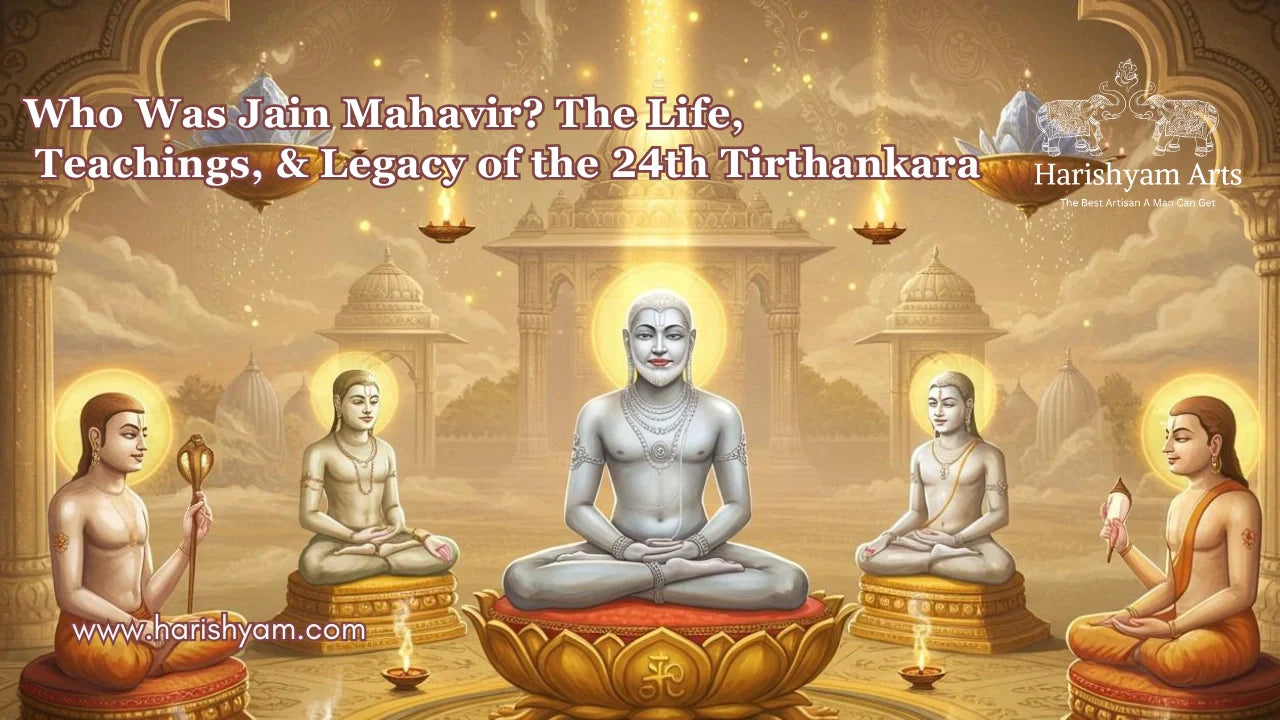
The 24 Tirthankaras of Jainism: Names, Symbols, and Significance
Lakshay Sharma | November 02, 2025
In Jainism, the Tirthankaras are revered as divine s...
Read More...
Top 25 Space-Saving Wooden Mandir Ideas for Modern Homes
Lakshay Sharma | November 01, 2025
A pooja mandir is the heart of every Indian home — a sacred corner where peace...
Read More...
What Are the 8 Forms of Lakshmi? | Ashta Lakshmi Meaning and Significance
Lakshay Sharma | October 31, 2025
The Divine Essence of Goddess Lakshmi
Goddess La...
Read More...
The Art of Craftsmanship: How Handmade Brass Statues Are Created
Lakshay Sharma | October 30, 2025
At Harishyam Arts, we celebrate the timeless beauty ...
Read More...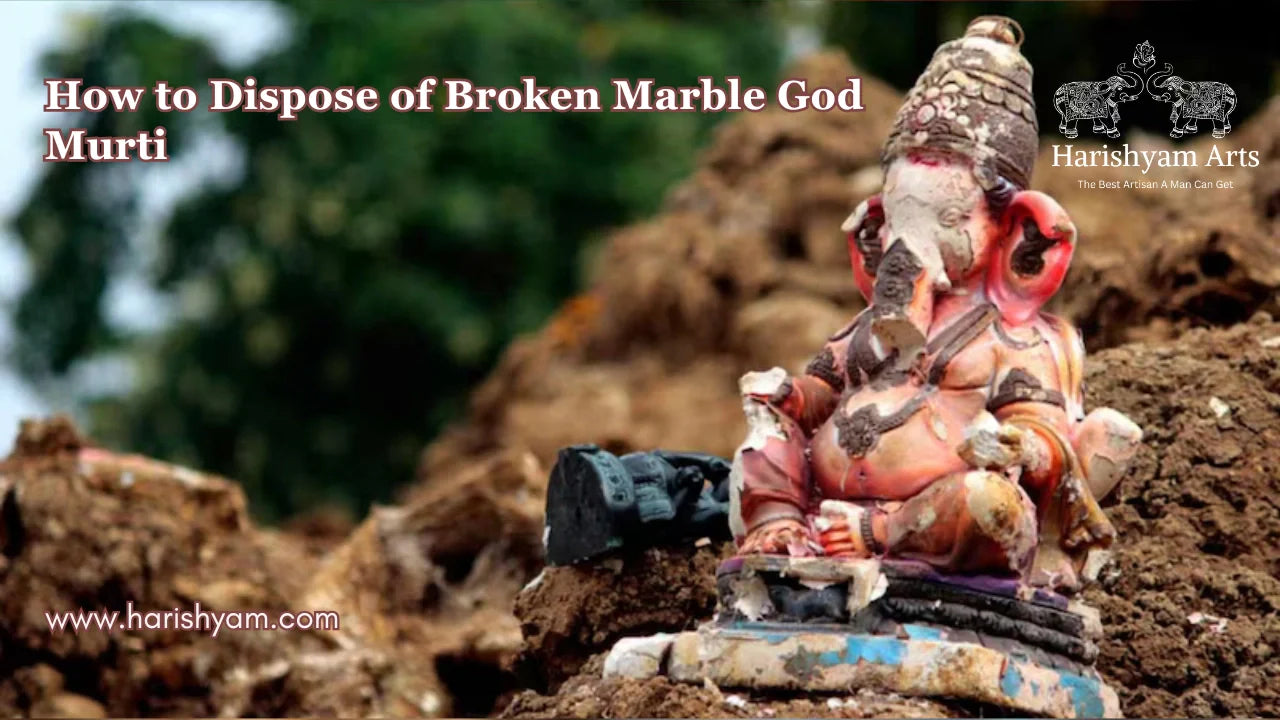
How to Dispose of Broken Marble God Murti
Lakshay Sharma | October 30, 2025
In Hindu tradition, marble murtis represent divine presence and spiritual ener...
Read More...
Wooden Statues vs Marble Statues: Which One Should You Choose?
Lakshay Sharma | October 29, 2025
When it comes to decorating your home or creating a sacred space, choosing the...
Read More...
How a Wooden Temple Enhances Positive Energy in Your Home
Lakshay Sharma | October 28, 2025
A home temple isn’t just a decorative corner — it’s the spiritual...
Read More...
Why Lord Krishna is Worshipped in Different Forms Across India
Lakshay Sharma | October 27, 2025
Lord Krishna — the eighth incarnation of Lord Vishnu — is one of the most belo...
Read More...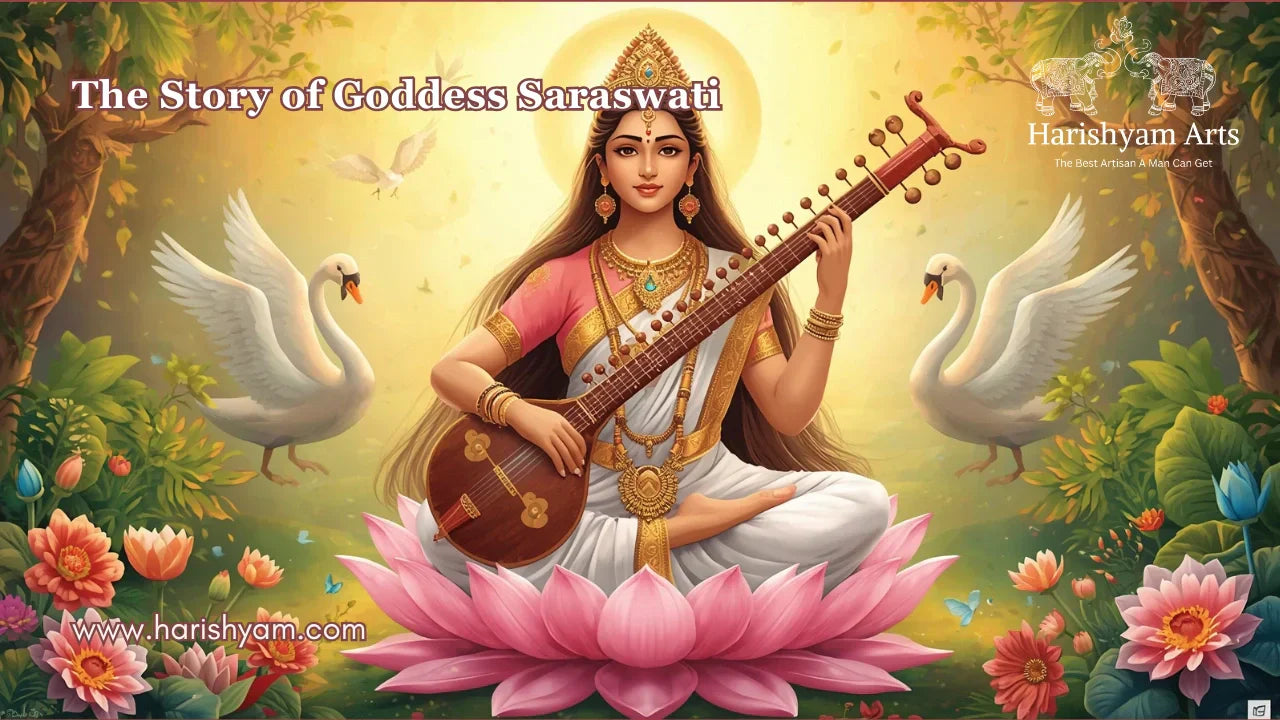
The Story of Goddess Saraswati: The Embodiment of Wisdom and Knowledge
Lakshay Sharma | October 26, 2025
Among the many deities of the Hindu pantheon, Maa Saraswati Read More...

Top Reasons to Choose Brass Statues for Home Décor and Spiritual Spaces
Lakshay Sharma | October 25, 2025
Home décor today is not only about beauty—it’s about creating a peaceful and m...
Read More...
How long do Corian temples last?
Lakshay Sharma | October 24, 2025
Choosing the right material for a temple at home is important for both aesthet...
Read More...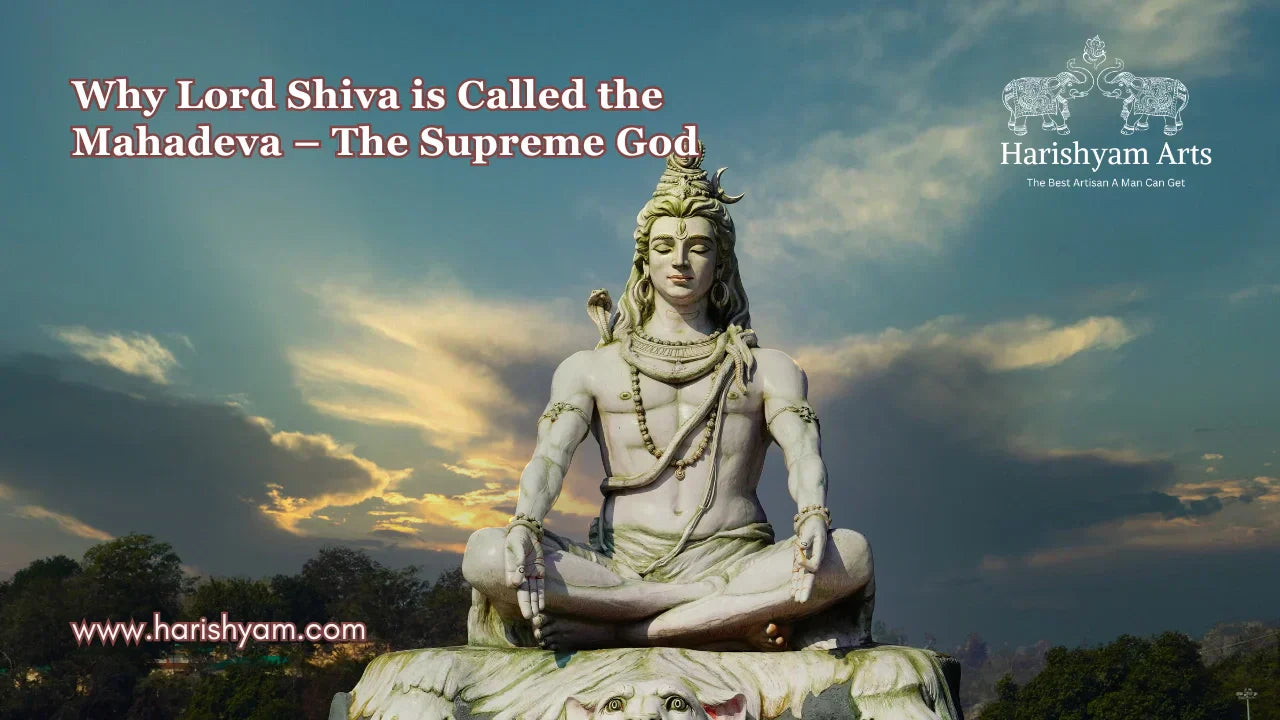
Why Lord Shiva is Called the Mahadeva – The Supreme God
Lakshay Sharma | October 23, 2025
Hinduism, one of the world’s oldest religions, has a rich pantheon of deities,...
Read More...
Why Corian Temples Are Becoming Popular in Contemporary Homes
Lakshay Sharma | October 22, 2025
In today’s modern homes, interior décor blends tradition with contemporary sty...
Read More...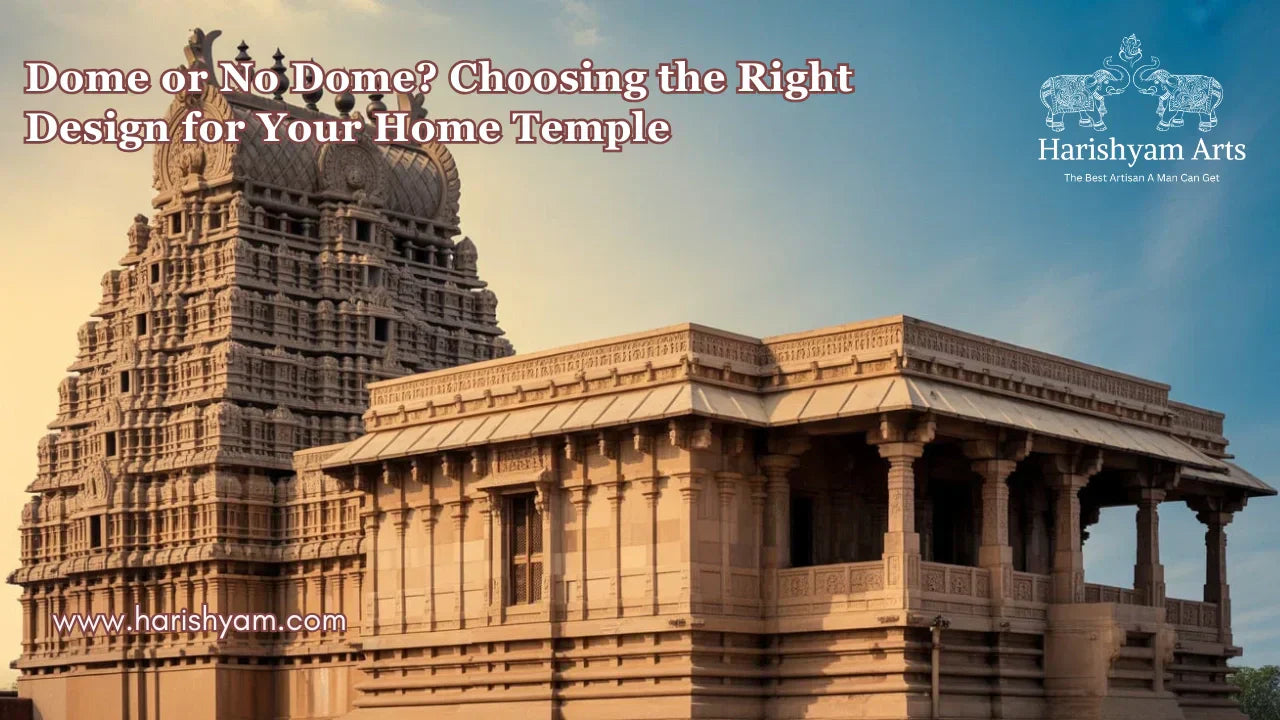
Dome or No Dome? Choosing the Right Design for Your Home Temple
Lakshay Sharma | October 21, 2025
Creating a sacred space at home is a spiritual investment, and the design of y...
Read More...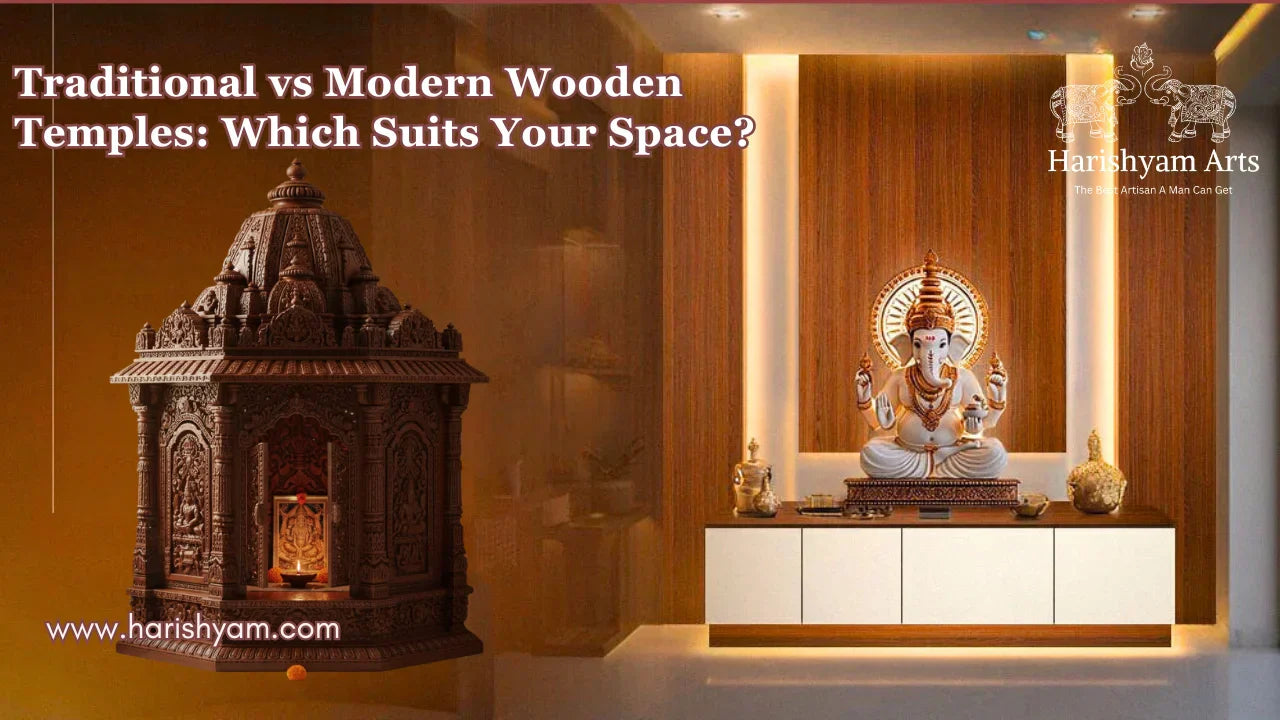
Traditional vs Modern Wooden Temples: Which Suits Your Space?
Lakshay Sharma | October 20, 2025
Creating a sacred space in your home is more than just interior décor — it’s a...
Read More...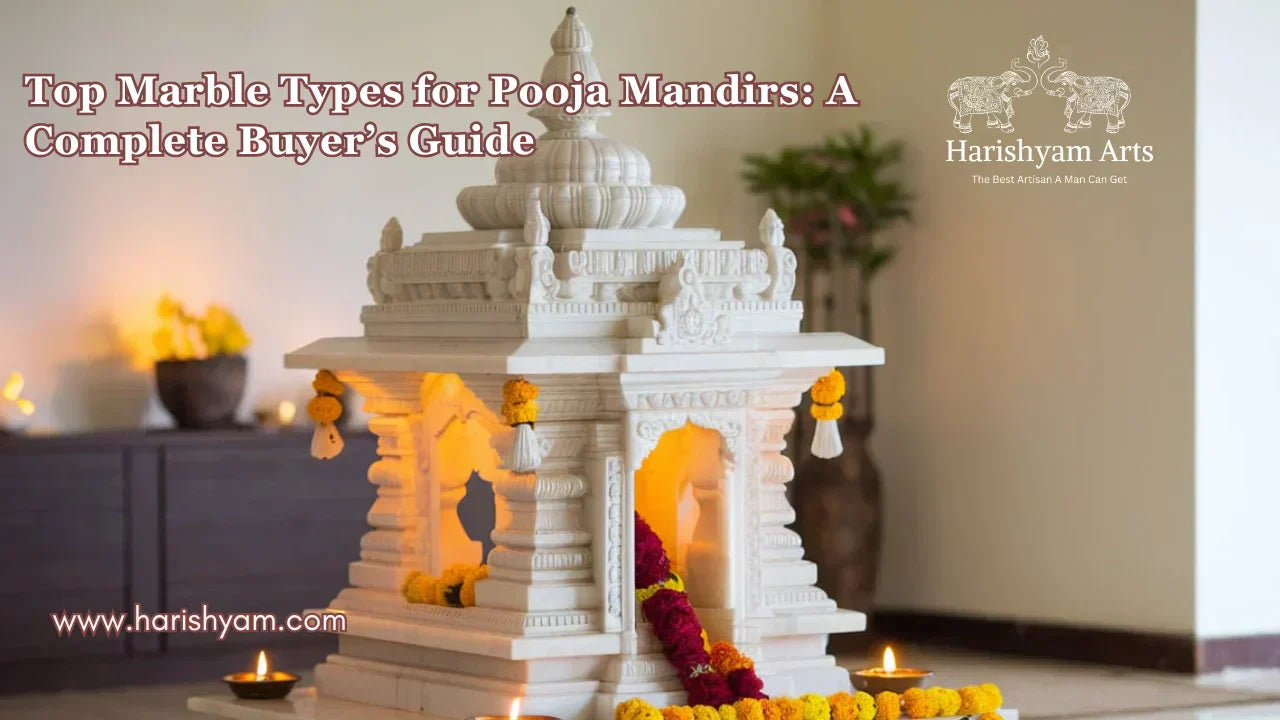
Top Marble Types for Pooja Mandirs: A Complete Buyer’s Guide
Lakshay Sharma | October 19, 2025
A Pooja Mandir is more than just furniture; it is th...
Read More...
The Different Forms of Shiva Statues and their Symbolism
Lakshay Sharma | October 18, 2025
Introduction to the God Shiva Statue
Lord Shiv...
Read More...
Guide to Choosing the Perfect Wooden Statue for Home and Office Décor
Lakshay Sharma | October 17, 2025
Wooden statues are more than decorative pieces—they are timeless symbols of ar...
Read More...
Understanding the Difference Between Handmade and Machine-Made Brass Statues
Lakshay Sharma | October 16, 2025
Brass statues have been a cornerstone of spiritual and decorative art for cent...
Read More...
Where to Buy Custom Marble Statue Online? A Complete Guide
Lakshay Sharma | October 15, 2025
Marble statues have always held a special place in Indian homes and temples. T...
Read More...
Mistakes You Shouldn’t Make When Purchasing a Home Temple Online
Lakshay Sharma | October 14, 2025
Buying a home temple online can be an exciting experience — especially with so...
Read More...
Mistakes You Shouldn’t Make When Purchasing a Home Temple Online
Lakshay Sharma | October 14, 2025
Buying a home temple online can be an exciting experience — especially with so...
Read More...
How to Clean and Maintain Wooden Statues at Home
Lakshay Sharma | October 13, 2025
Wooden statues add elegance, tradition, and warmth to any home. From intricate...
Read More...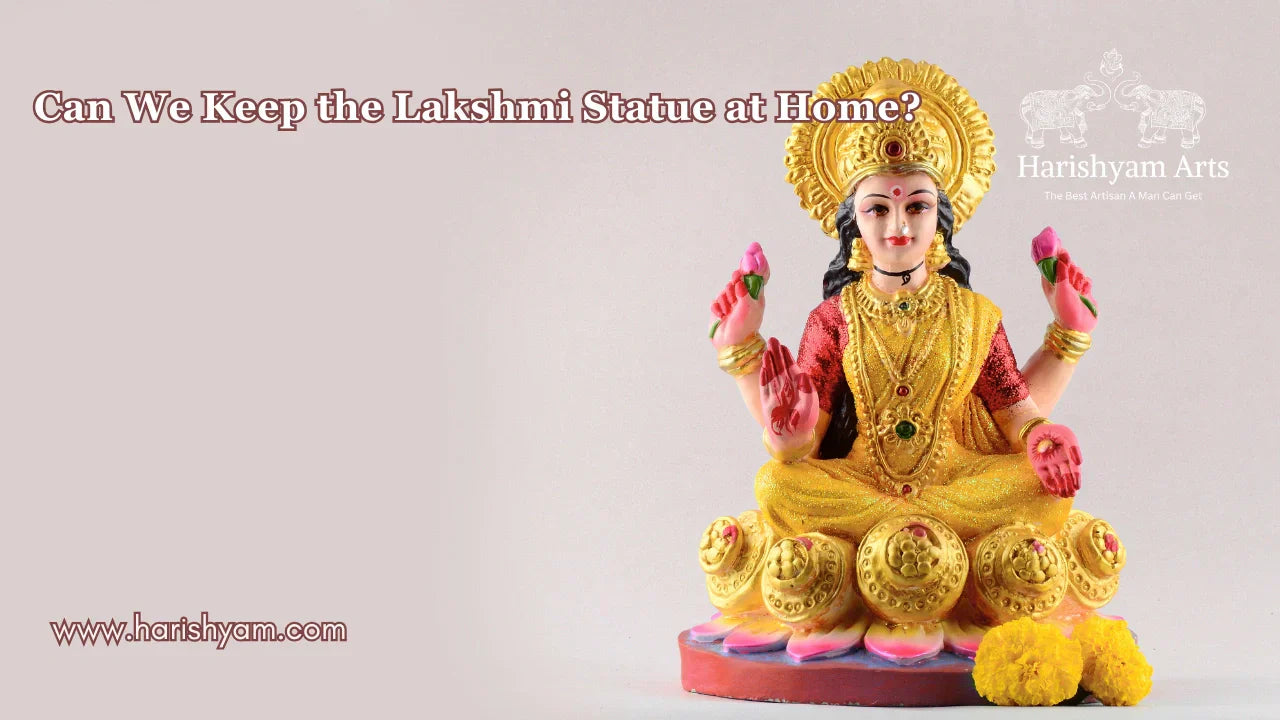
Can We Keep the Lakshmi Statue at Home?
Lakshay Sharma | October 13, 2025
In Hindu tradition, Goddess Lakshmi is worshipped as the divine force of wealt...
Read More...
How to Clean Brass Statues at Home?
Lakshay Sharma | October 12, 2025
Brass statues add a touch of elegance and spirituality to any home. At Harishy...
Read More...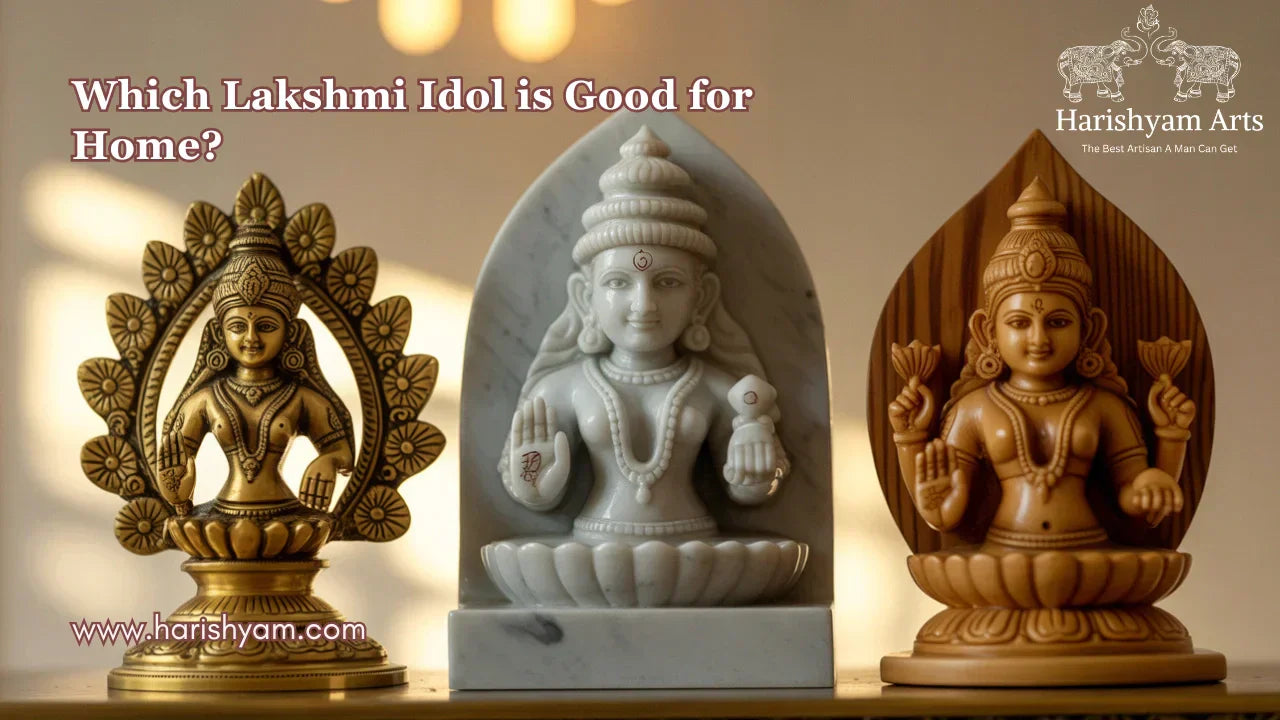
Which Lakshmi Idol is Good for Home? Types, Materials, and Significance
Lakshay Sharma | October 11, 2025
Goddess Lakshmi, the divine symbol of wealth, prosperity, and abu...
Read More...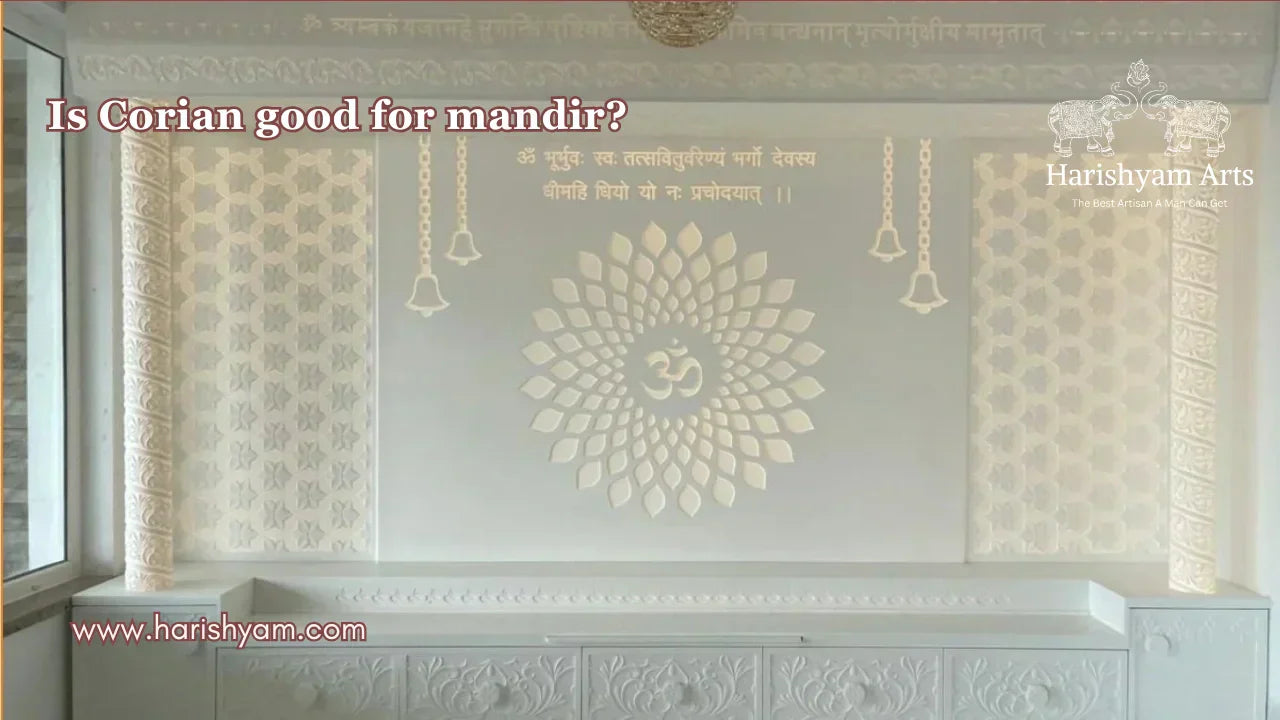
Is Corian Good for Mandir? A Complete Guide
Lakshay Sharma | October 10, 2025
When it comes to designing a home mandir, choosing t...
Read More...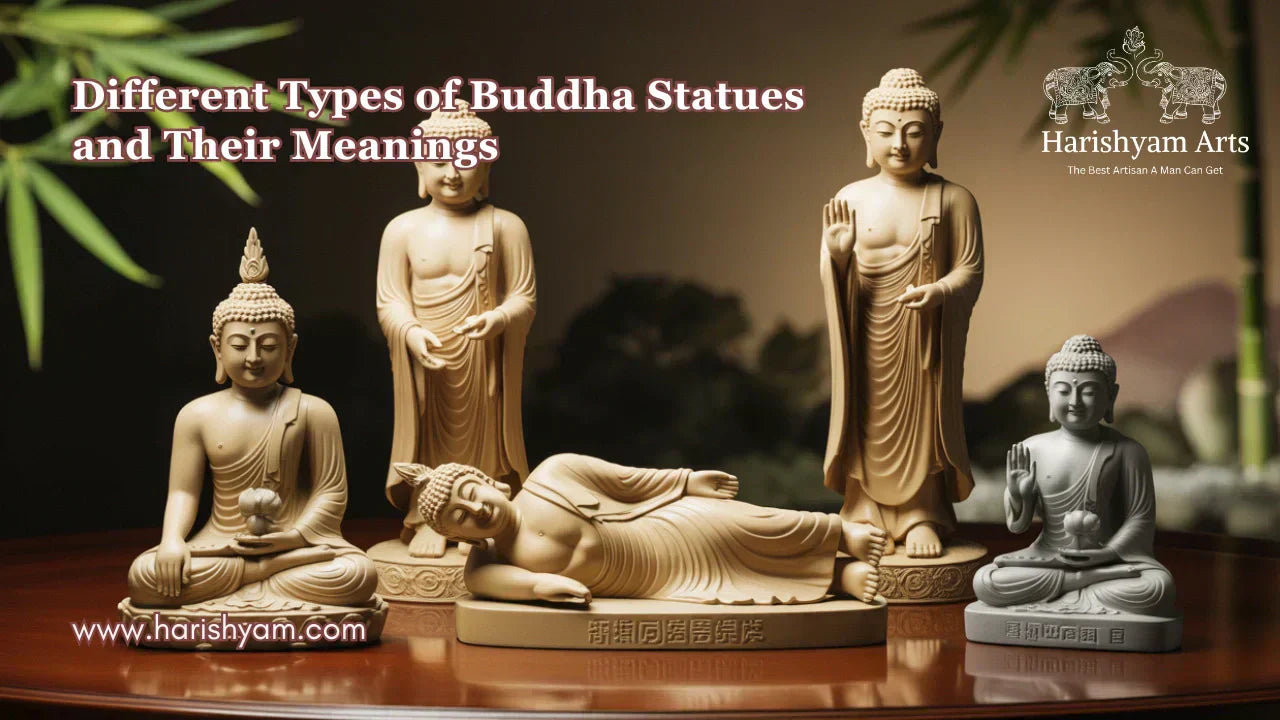
Different Types of Buddha Statues and Their Meanings
Lakshay Sharma | October 09, 2025
Buddha statues are more than just beautiful decorative pieces—they symbolize s...
Read More...
How to Identify a Real Habur Stone? A Complete Guide
Lakshay Sharma | October 08, 2025
Habur stone, known for its mysterious ability to turn milk into curd naturally...
Read More...
How long does Marble Statues Last?
Lakshay Sharma | October 06, 2025
Marble statues can last for centuries, or even thousands of years...
Read More...



